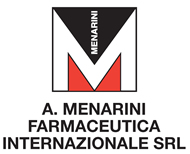Powergel 2.5% gel
Active Ingredient:
ATC code:
M02AA10
About Medicine
Prescription only medicine
My Account Area

A. Menarini Farmaceutica Internazionale SRL


Address
Menarini House, Mercury Park, Wycombe Lane, Wooburn Green, Buckinghamshire, HP10 0HH
Telephone
0800 085 8678
Fax
+44 (0) 1628 856402
Medical Information e-mail
[email protected]
Medical Information Direct Line
0800 085 8678
Out of Hours Telephone
0800 085 8678